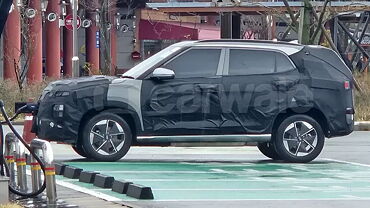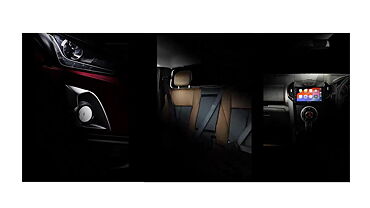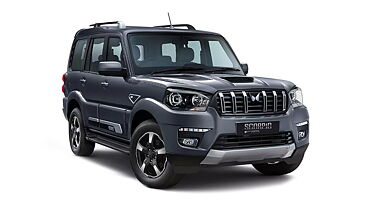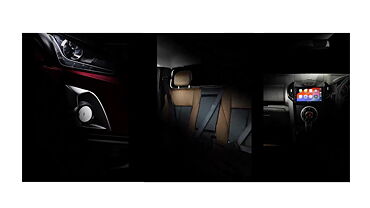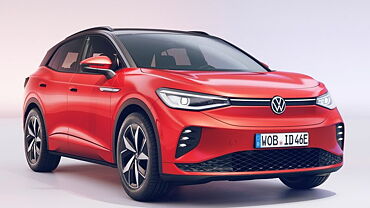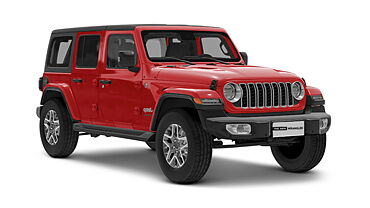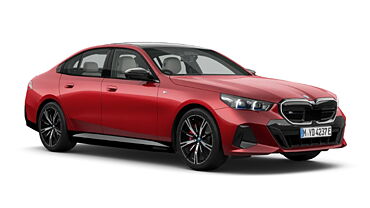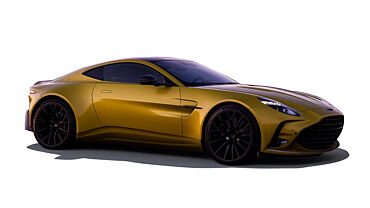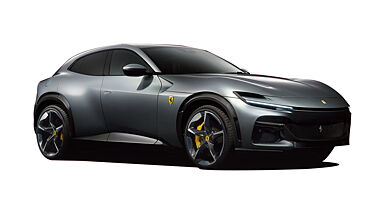Cartrade Comparison Test
Introduction
The popular Hyundai Grand i10 has been refreshed for 2017 - it’s still got the old car’s practicality but with sleeker looks, a larger diesel engine and a series of changes inside and out. Unsurprisingly, it’s more efficient than ever and has all the tricks to really compete in the mid-size hatch segment which has seen a new entrant in the form of the Maruti Suzuki Ignis. The latter is like a breath of fresh air in this segment as it allows for several personalization offers for trendy buyers.
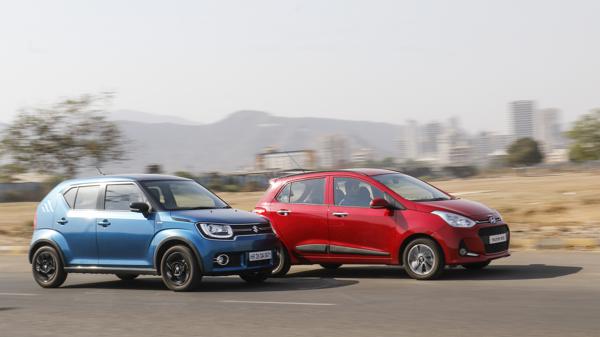
So which of these two rather different family hatchbacks will come out on top? We tested the top-spec diesel trims to find out.
Exterior

The Ignis’ size shows how city-friendly it is, measuring 3700mm long, 1690mm wide and 1595mm tall. In comparison, the Grand i10 is longer than but not as wide as the Ignis. Besides, the latter sits taller off the ground as well. When it comes to the looks, it’s the Ignis with its quirky, kei-car like details that turns heads the most here. The Ignis has been designed primarily for the Japanese crowd and their peculiar taste towards aesthetics. Next to it, the Grand i10’s look can be best described as meek. Sure, its design is thoroughly modern and the whole car sits well-proportioned to the ground, but the 2017 model’s exterior alterations (Read: different grille, front and rear bumpers and daytime running LED strips) are subtle on this top-spec diesel trim.

Interior
While the 2017 Grand i10 retains its straightforward albeit, slightly dull layout for the dashboard, the Ignis is young and bold, not to mention distinctive with the way its dashboard is laid. Everything from the slim dash, the giant touchscreen display, body-coloured door handles and the toggle-like switchgear are bits that are completely new to small car buyers. Sticking out of the dash, the touch display catches the eye as soon as you turn the key. It is bright, colourful and features smartphone mirroring tech, besides Bluetooth and USB.
The Grand i10’s cabin may seem relatively conventional but it’s also got a stellar touchscreen infotainment system. The system, in fact, is one of the few highlights of the 2017 upgrade and comes with Apple CarPlay and Android Auto. Screen aside, the level of perceived quality inside the Grand i10 is significantly better than that of the Ignis. The Grand i10’s mundane looking switchgear, the dual tone upholstery and the dials and knobs all have the feel of a higher quality to the touch, press or otherwise. Like the Grand i10, the Ignis has hard plastic surfaces but they are not as nicely finished. What’s more, the controls for the electric mirrors and the steering column mounted stalks don’t have the same level of solidity in the hand as the Grand i10’s bits and bobs.

Upfront, the difference in seating comfort isn’t much. Both the Ignis and the Grand i10 have adequately sized front seats with decently large squabs for most occupants. The only difference here can be found in the footwell – the Ignis has a great deal of knee room thanks to the slim dash and the extra width whereas the Grand i10 struggles with a narrower footwell.
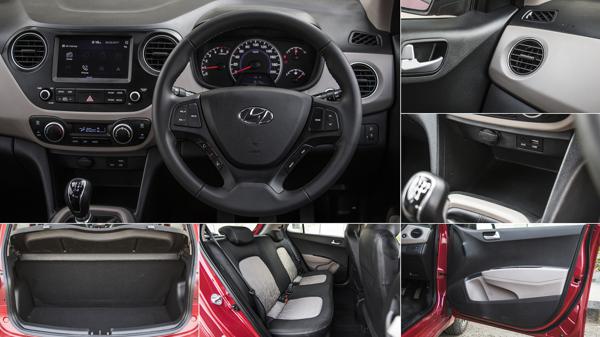
The Ignis gets an early lead on its rival upfront and still manages to impresses as you move on to the rear. It keeps its roofline tall all the way to its hatched rear to create more headroom for the occupants. The rear bench is perched high for good visibility and to allow tall occupants to stretch their legs further down the floor. The rear bench, however, is relatively flat and features less contours compared to the Hyundai and because of the small rear windows and all-black upholstery, the sense of space isn’t as much either. Although one sits noticeably lower in the Grand i10, the rear bench is well shaped with more in terms of contours – a big draw-card for those who drive with their family for most occasions.
Performance
The Grand i10 diesel now gets a larger 1.2-litre engine which makes 74bhp at 4,000rpm and 190Nm of torque at 1,750rpm. The Ignis, meanwhile, uses a 1.3-litre diesel engine, putting out similar power and torque. Around town, the Ignis feels consistently livelier at slow to medium speeds than its negligible on-paper advantage would suggest. And this has much to do with the fact that it responds sharply to the throttle, especially when the turbo is on song.
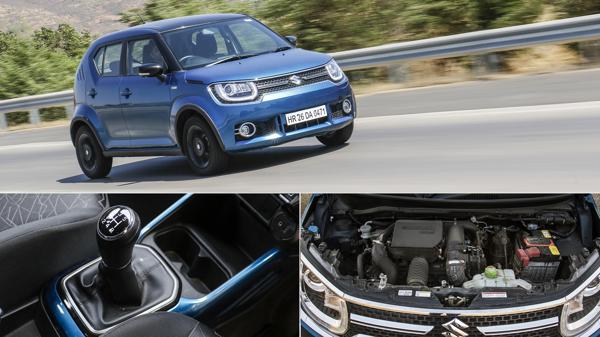
Unlike the old Grand i10 which has an incredibly linear power delivery there is a bit of spike in power delivery at around 2,000rpm in the new model. What’s more, there is always enough torque to keep up with city traffic and the engine remains impressively quiet and devoid of any vibration despite being a three-cylinder unit. The Ignis, too, is equally quick, however the turbo lag is more prominent and the engine itself is nowhere as refined as Hyundai’s motor. Both these cars prefer plenty of revs to keep things moving briskly and you can expect a need to row through the gears often. In this case, it’s the Grand i10’s shifting mechanism that’s simply faultless – the gearshifts are as precise as they can get in small cars and the clutch pedal is superbly weighted too. The Suzuki’s more prominent turbo lag and spikier power delivery means you are likely to work the gearbox slightly more. Nonetheless, the 5-speed unit is a joy to use and the clutch is pleasantly light as well.
Both the Ignis and the Grand i10 are perfect for driving around town and they are not bad on faster roads either. You have got to get behind the wheel to appreciate the Grand i10’s true quality. With its smooth engine, planted ride and excellent NVH, it has the feel of a vehicle from a class above. The cabin is well insulated from road and wind noise, while the ride is surprisingly supple (in contrast to previous Hyundai models) at speed. It’s a little firm over scarred and potholed city roads, but never uncomfortable.
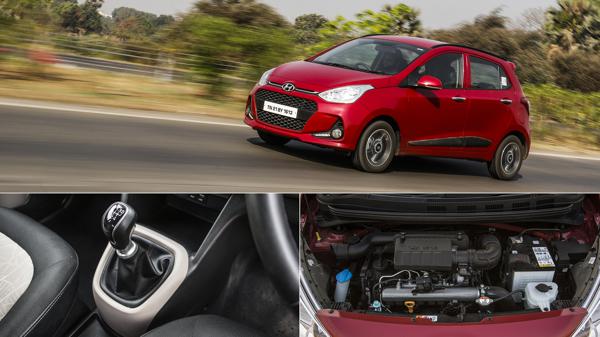
In terms of driving involvement, the Ignis is a step ahead with a more sensitive steering and quick turn-in meaning you can have some fun on twisty roads. As for the way it tackles bad roads, the low speed ride is certainly more absorbent than that of the Grand i10 with a nice, soft edge over rippled surfaces. Things improve as you hit the highway, but it’s nowhere near as refined as the Hyundai at triple digit speeds – there’s more of engine, road and wind noise all the time.
Conclusion
The Maruti Ignis makes a lot of sense for those who are looking for a fun, quirky hatch with a sensible side. Around town, its light handling and brilliant manoeuvrability are hard to ignore and its strong diesel engine and good amount of space are a big plus as well. That said, its ride comfort and cabin quality and finish do not exactly justify the premium pricing. In that regard, the 2017 Grand i10 impresses big time with its better quality cabin, improved ride quality and a competitive price tag. Its new 1.2 diesel motor isn’t exactly rapid, but there’s no denying that it packs in superb driveability and is surprisingly refined. All in all, the Grand i10 impressed us by how well developed it feels for a hatchback.
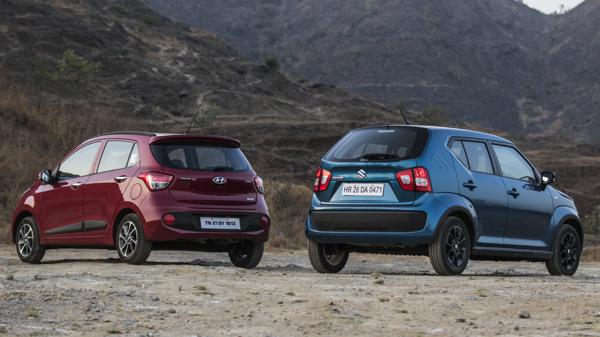
Author: Sagar Bhanushali



![Maruti Suzuki Ignis [2020-2023] Maruti Suzuki Ignis [2020-2023]](https://imgd-ct.aeplcdn.com/160x89/n/cw/ec/44409/marutisuzuki-ignis-right-front-three-quarter3.jpeg?q=80)
